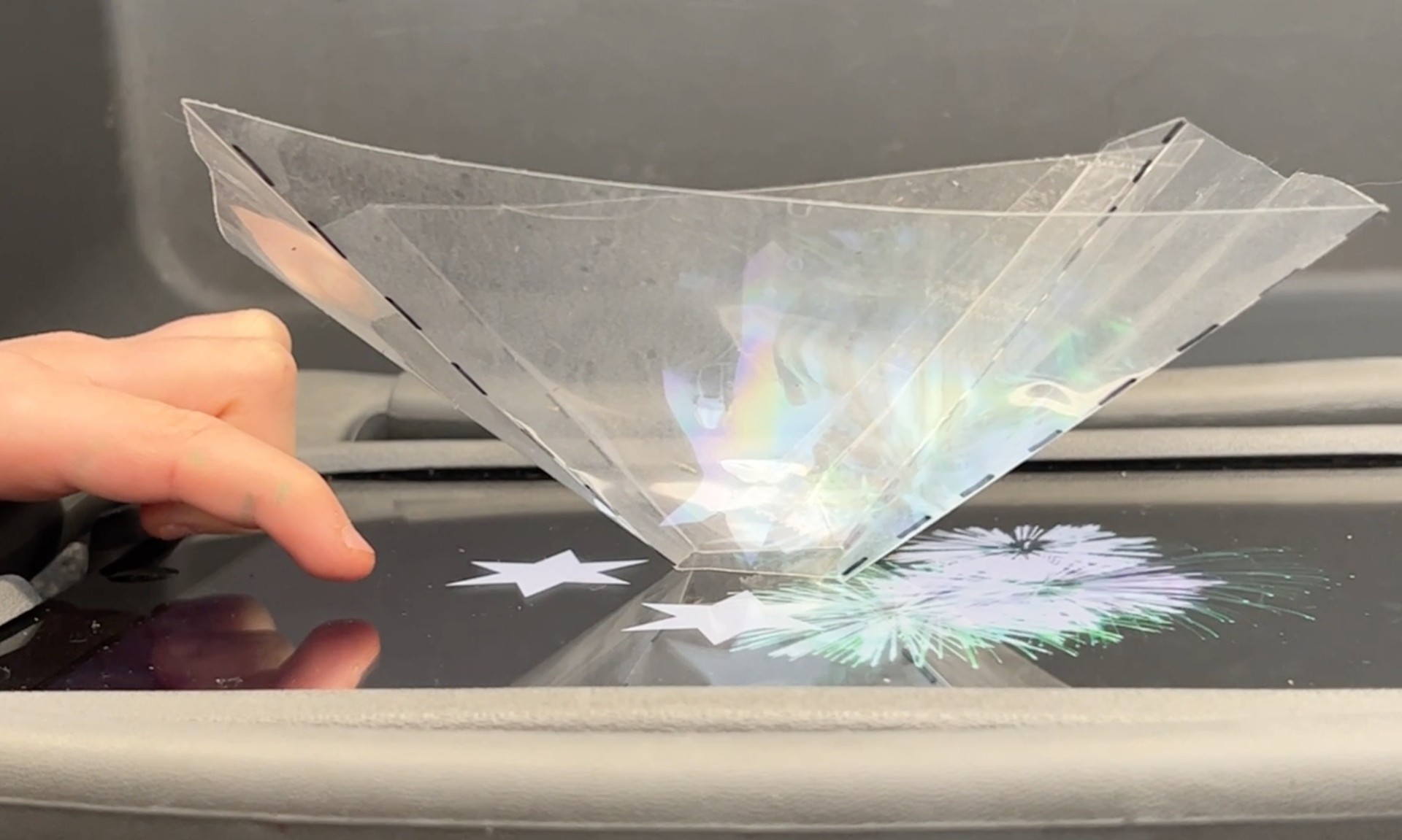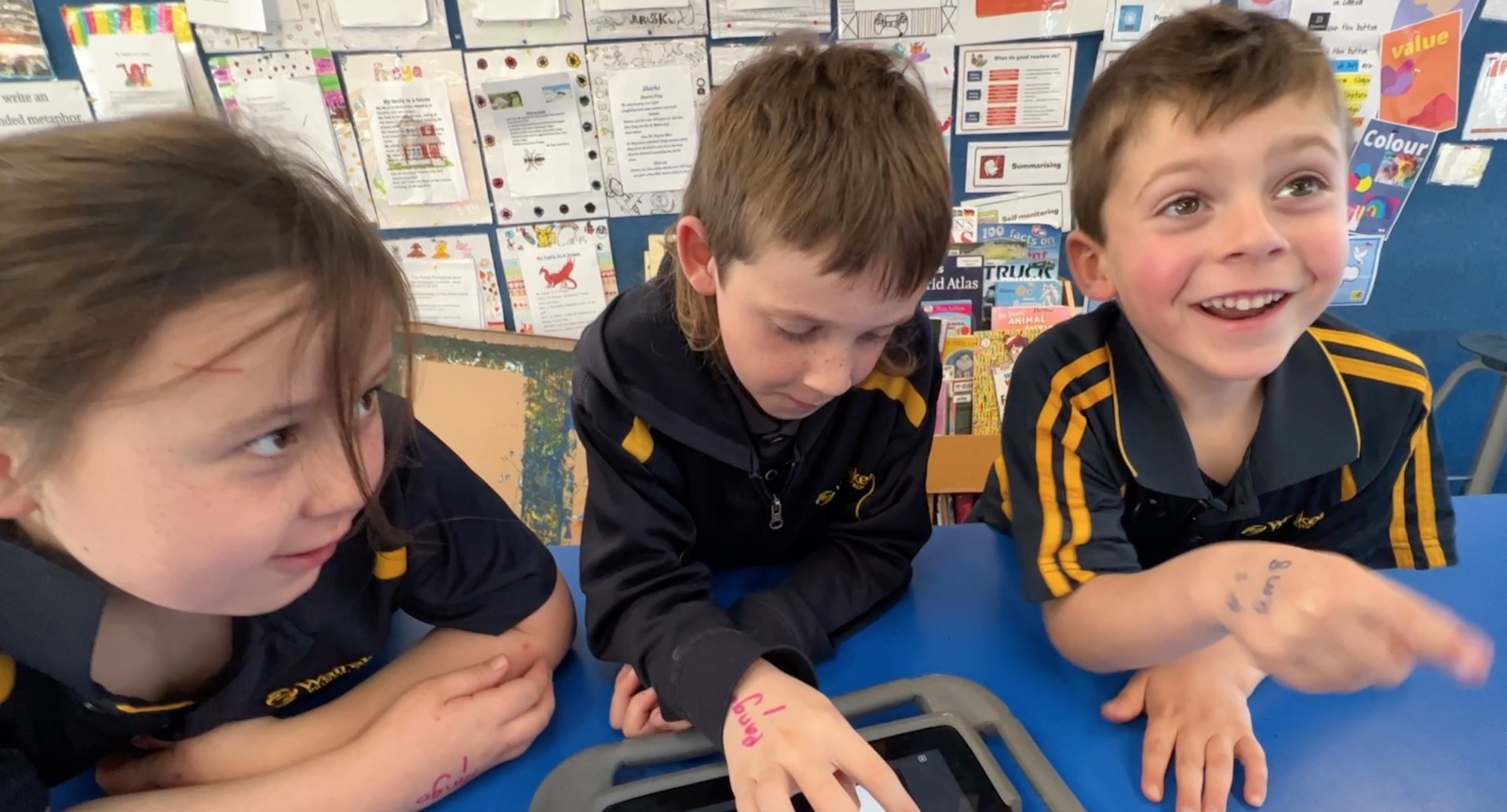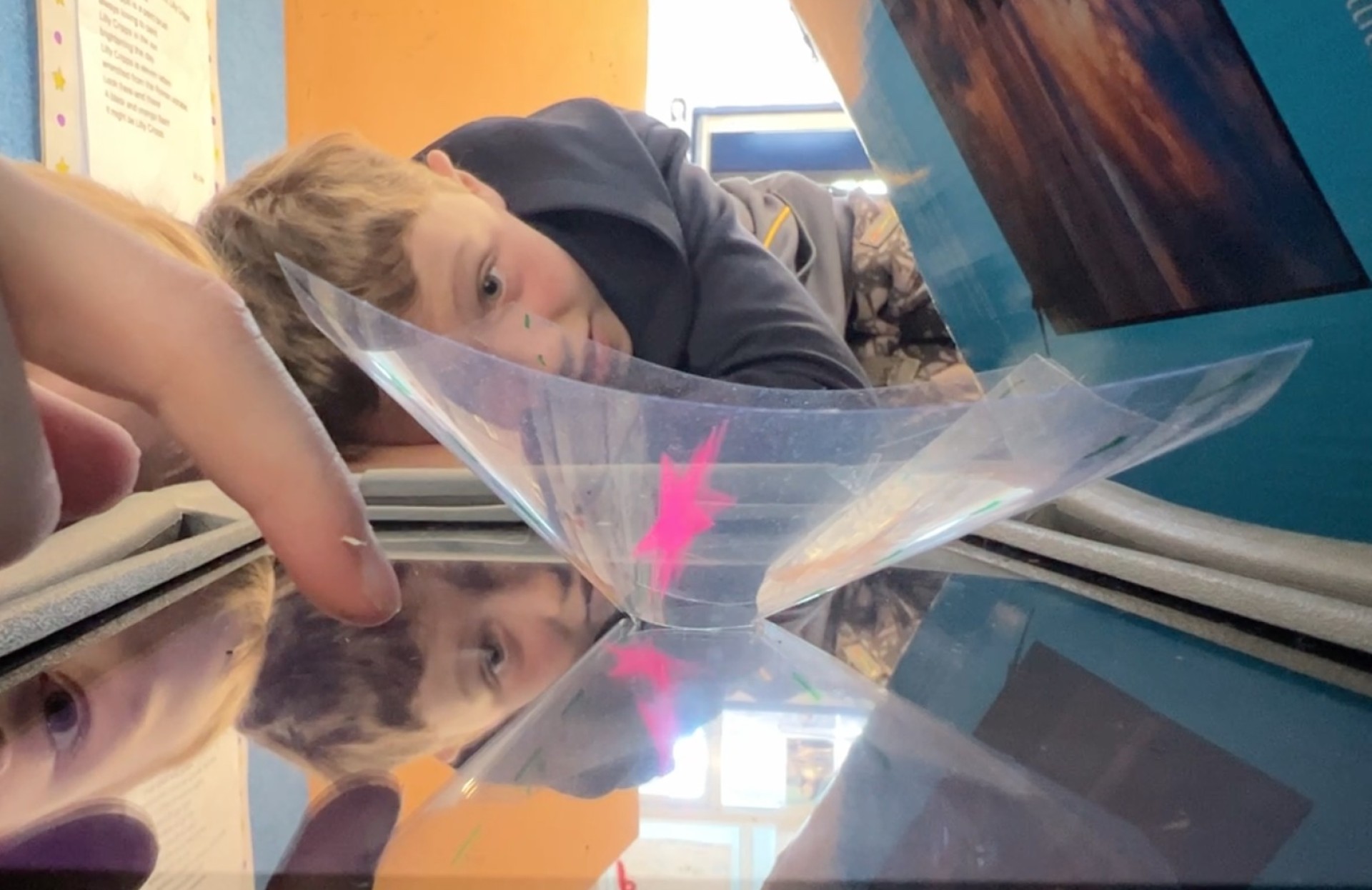To create holograms of stars as part of our Matariki celebration, students used a transparent sheet as a mini-projector. The app used was called Keynote on the iPads, and students had not used this particular app before.
Students were ‘developing digital outcomes’, an area of the Digital Technologies curriculum, in order to share their stars with an audience. Images and videos of their displays were then stored to share. Students had to follow a series of teacher-directed steps in order to bring the hologram to life. There were many steps involved, including creating, copying, and animating the stars, and it wasn’t without its challenges.
My Keynote is not working. It says it needs an update.
Mine [the projector] keeps tipping over.
How do I put in more stars? They don’t do anything.
There were also many moments of success.
Ours worked really well and easily.
You can see the stars so well. Scott wanted to make animal shapes so we tried that, too.
We made the stars move and they did different animations.
I made it move so fast. And the blue one just burns! - (using flame animation)
Tuakana teina had a large impact on this learning, meaning older students supported younger students. However, in many cases, the younger students exhibited more creative flair and inspired the older students. The educational principal of akō was evident as each person had the chance to be both the learner and the teacher in this reciprocal learning experience. Students also showed the POWER values of opportunity, by trying different ideas, and excellence, by making multiple attempts, even when it was hard. Key competencies featured heavily as students were required to be thinking, participating and contributing, and using digital language, symbols, and text.
For most, it was their first time seeing holograms and certainly the first time making them. How will holograms feature in our digital future? It is up to our learners to use this technology and find out.
Thank you to Alex Walker from Te Akau ki Papamoa Primary School for this lesson idea.
A hologram is a three-dimensional projection which can be seen without using any special equipment. It can be viewed from any angle. As the mini-projector moves around the display, the object will appear to move and shift realistically. To create holograms of stars as part of our Matariki celebration, students used a transparent sheet as a mini-projector. The app used was called Keynote on the iPads, and students had not used this particular app before.
Students were ‘developing digital outcomes’, an area of the Digital Technologies curriculum, in order to share their stars with an audience. Images and videos of their displays were then stored to share. Students had to follow a series of teacher-directed steps in order to bring the hologram to life. There were many steps involved, including creating, copying, and animating the stars, and it wasn’t without its challenges.
My Keynote is not working. It says it needs an update. - Finn
Mine [the projector] keeps tipping over. - Donovan
How do I put in more stars? They don’t do anything. - George
There were also many moments of success.
Ours worked really well and easily. - Lizzie
You can see the stars so well. Scott wanted to make animal shapes so we tried that, too. - Sophie
We made the stars move and they did different animations. - Stacy
I made it move so fast. And the blue one just burns! - Hugo (using flame animation)


Tuakana teina had a large impact on this learning, meaning older students supported younger students. However, in many cases, the younger students exhibited more creative flair and inspired the older students. The educational principal of akō was evident as each person had the chance to be both the learner and the teacher in this reciprocal learning experience. Students also showed the POWER values of opportunity, by trying different ideas, and excellence, by making multiple attempts, even when it was hard. Key competencies featured heavily as students were required to be thinking, participating and contributing, and using digital language, symbols, and text.

Students were required to “develop, manipulate, store, retrieve, and share digital content in order to meet technological challenges. In doing so, they identify digital devices and their purposes and understand that humans make them.” (DT, NZC)
For most, it was their first time seeing holograms and certainly the first time making them. How will holograms feature in our digital future? It is up to our learners to use this technology and find out.
Watch our video here to see our holograms. Thank you to Alex Walker from Te Akau ki Papamoa Primary School for this lesson idea.
Keywords: Holograms, Keynote, iPad, Matariki, Digital Technologies, key competencies, POWER




Comments are disabled for this post.